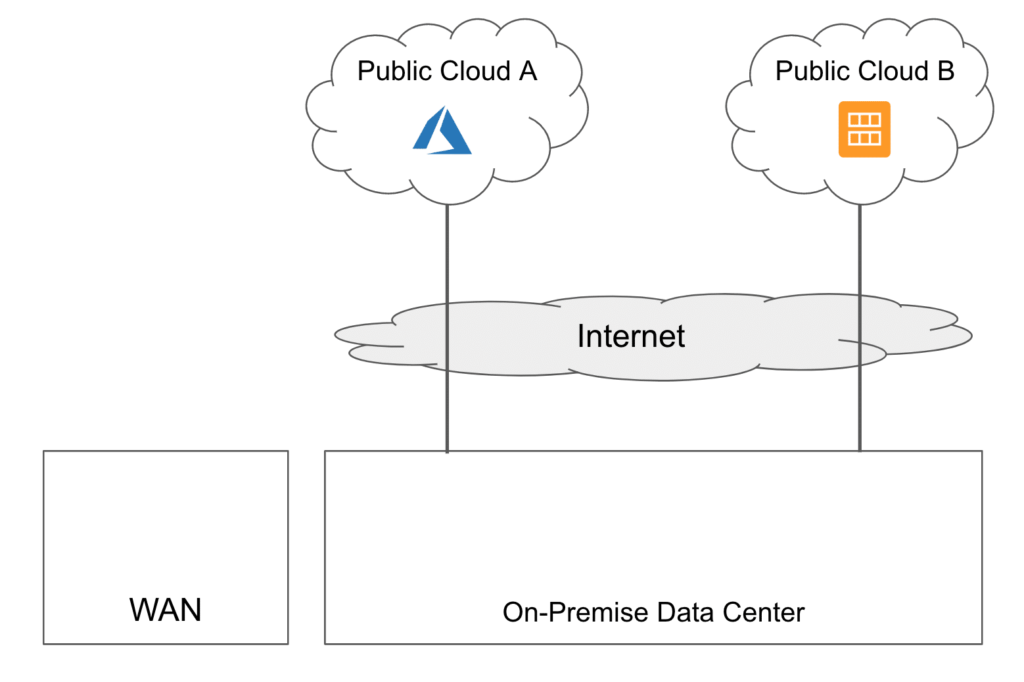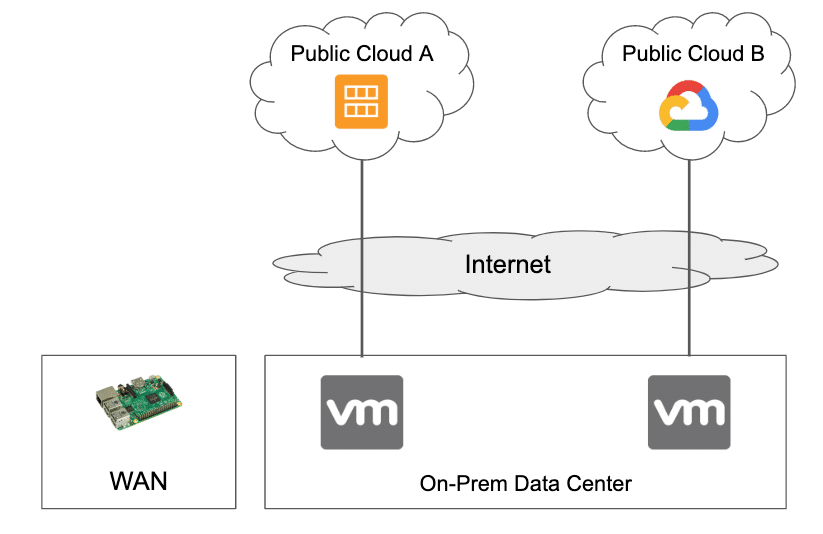What is Hybrid Multi-Cloud?
Hybrid Multi-Cloud is a term used to denote an organization with a private, enterprise network, that has adopted two or more public cloud providers to host services. For example, a company could use Microsoft Azure Cloud to host its Sharepoint, Office 365, Outlook and Team applications and then Amazon Web Services, or Google Cloud, to host Linux-based servers for home grown applications. A typical network diagram of a hybrid multi-cloud network will look something like this:
Single-Cloud Versus Multi-Cloud
When “going to the cloud”, should companies choose one, two, or even more cloud providers? Like for any decision that affects a company’s operations – it depends. Having a multi-cloud network means that you have to train your team on a multi-vendor environment, procurement to work with many vendors, and increase complexity to your network. This is nothing new to most IT professionals that have worked in medium or large organizations.
Although every major cloud provider offers geographical redundancy, from time to time, a single cloud provider may suffer an outage that impacts its users. It has happened to AWS, Google, and Azure, and it will undoubtedly happen again. Can your business afford downtime in the event that your cloud provider suffers an outage? If the applications are running on software containers, it will be easier (sometimes automatic) to relocate workloads from one cloud provider to another one that is not experiencing an outage.
Another good reason to embrace a multi-cloud strategy is to reduce the threat of cybersecurity breaches. This is one of the claims that IBM brought up when it offering was removed from the Pentagon’s $10 billion bid for the Joint Enterprise Defense Infrastructure (JEDI) cloud computing network. IBM, along with Oracle, didn’t meet the requirements set by that bid. To conclude, whether or not multi-cloud is the best choice for your company, many companies are following this trend, and it’s for good indeed.
Monitoring Hybrid Multi-Cloud Environments
So how do you monitor hybrid multi-cloud environments? The double edged sword of a cloud environment is that the company doesn’t own, operate, and control the underlying network infrastructure. For this reason, most traditional network monitoring tools won’t be able to detect and alert about device failures. The solution to this limit is to deploy cloud network monitoring agents at remote cloud providers that run end-to-end performance tests with on-prem agents, either at the data center, or remote WAN locations.
NetBeez Hybrid Multi-Cloud Monitoring Solution
NetBeez cloud and software agents can run on Amazon Web Services (AWS), Microsoft Azure or Google Cloud. Users can host cloud agents in their own cloud environment, or request for NetBeez to do so. Cloud agents, as well as virtual ones, make a perfect use case for hybrid multi-cloud monitoring. Network performance tests can run between public and private cloud agents. The NetBeez alerting system can detect connectivity issues, as well as performance degradations related to packet loss and high round-trip time, which are two factors that affect throughput.
If you want to start monitoring your AWS environment with a cloud agent, watch the following How To video:







